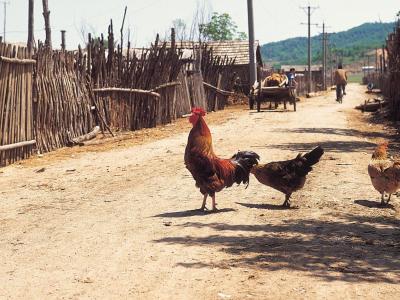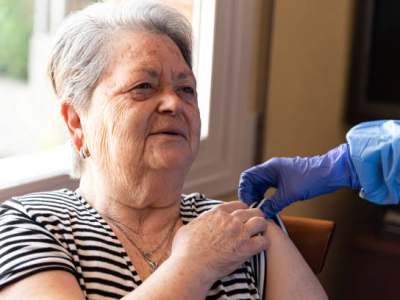Influenza D transmits between cattle, causes mild disease
Cattle serve as a natural reservoir for influenza D, which causes mild upper respiratory disease and can be transmitted to other cattle through contact, according to a Mar 30 study in the Journal of Virology.
Researchers from Mississippi State University and St. Jude Children's Research Hospital intranasally inoculated three healthy calves with flu D, a virus in the family Orthomyxoviridae initially identified in swine in 2011. Inoculated calves were compared to three control cows and three calves placed in direct contact with inoculated cattle.
All inoculated and contact calves seroconverted to flu D, and virus was detected in tissues of the nasal passage, trachea, and bronchus. Inoculated calves experienced higher increases in inflammatory markers, such as neutrophil tracking and tracheal epithelial attenuation, which could make them more susceptible to co-infections, the authors said.
Though inoculated and contact calves had mild signs of disease consistent with upper respiratory infections, clinical signs appeared enhanced in contact animals, the authors said. Disease in the inoculated group involved dry coughing, nasal discharge, depression, and mild abnormal lung sounds, while the contact group experienced abnormal lung sounds and nasal and eye discharge.
Two ferrets exposed to flu D fomites (plastic toys soaked with nasal discharge) from the infected cows did not seroconvert or shed virus, suggesting that flu D cannot be transmitted through fomites to ferrets but can successfully be transmitted through contact between cattle, which serve as a natural reservoir for the virus, the authors said.
Mar 30 J Virol study
Low-path H5N3 detected on French goose farm
French agriculture officials recently reported another low-pathogenic H5N3 avian flu outbreak, detected during routine surveillance at a goose breeding farm in Landes department in the southwestern part of the country, according to an Apr 1 report to the World Organization for Animal Health (OIE).
The farm in Montaut had 700 birds, which are slated for culling. The event began on Mar 17 and was declared resolved on Mar 31. Other control measures include disinfection, screening, and poultry tracking.
France has battled several avian flu outbreaks since December, involving several different strains, including highly pathogenic H5N1, H5N2, and H5N9. The events have occurred in departments in the country's southwestern region. The most recent outbreak is the fifth to involve low-pathogenic H5N3.
Apr 1 OIE report











